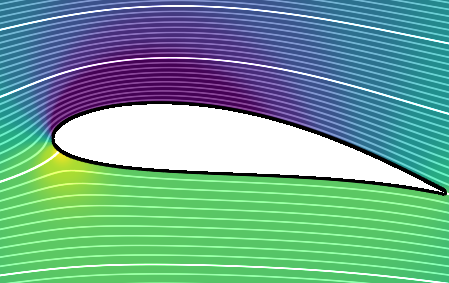Physics 4.0 upgrade

The release of Physics 4.0 on the Experimental Branch was a massive success. You have tried our improvements and shared valuable feedback with us. You all seem to have a great time with the physics improvements! We couldn't be happier with the result.
Does that mean it's time to release it on the main version of the game? Not quite yet: your feedback and enthusiasm have encouraged us to push the envelope a little more, further broadening the gap with anything that's available on the market to date. No, we don't solve things with a silly gravity sliders. We push for the most accurate simulation possible by improving every nook and cranny of our simulation systems to emulate real world physics.
While the first iteration of Liftoff Physics 4.0 was mostly about drag, we are now we are working on a more accurate lift simulation! A long block of text full of juicy physics science ahead:
What is lift?
Lift is a mechanical force generated by a solid object moving through a fluid. It is influenced by the fluid's properties (density, viscosity and compressibility), the surface area of the solid object, its shape and velocity, and its relative angle to the flow. Lift is perpendicular to the flow, and therefore to drag.
Lift can be explained by a pressure difference and a change in flow velocity. If we consider an airfoil flying forward and tilted backward, the air velocity under the object will be lower than that above it. As for the pressure, it will be higher under the airfoil than above. This creates a vertical upward force on the airfoil.
|
|
|
| Difference in pressure around an airfoil around an airfoil | Difference in air velocity around an airfoil |
That said, an exhaustive physical model of lift is quite complex and still subject to discussion today.
Although most drones do not have a specifically airfoil-shaped profile, they still generate lift in a similar way. Let's consider a drone flying in straight line while pitched forward. Given the drone's orientation, this time the high pressure zone is on the top and the low pressure on the bottom. The lift actually points downwards.

Thrust, drag and lift direction in the case of a quadcopter flying in straight line (force scale is not representative)
Why focus on lift?
We have received feedback saying that drones didn't feel heavy enough and that gravity was too low. Now we know for a fact that gravity is accurate, and the weights we use are realistic. So the question is: what gives some players that feeling?
It's long been established that computer performance can affect the physics and that visual settings such as fisheye or field of view angle, can strongly affect one's sense of speed. Nonetheless, we still wanted to investigate and found two possible areas of improvement:
- Drag essentially slows down the movement of an object moving through a fluid. Inaccurate drag could make the air feel thicker than in real life, giving a feeling of lower gravity in some conditions. Drag improvement implemented in Physics 4.0 were made with that in mind.
- Lift, in certain conditions, actively pushes the drone downwards. For instance, on that same forward pitching drone, a more accurate and pronounced lift will give a bigger initial downwards push when cutting the throttle.This results in a more pronounced feeling of weight, without undesirable adjustments to factors we already know to be correct.
Fascinating challenges!
When trying to simulate complex effects experimental data is key. While decent experimental data is available about specific profiled shapes, that is not the case for classical FPV drones. With regard to lift, this results in a lack of information about:
- The exact order of magnitude
- The impact of the type of flow
- The influence of the drone's angle of attack and how to generalize that to any drone orientation
If you are interested in testing these new changes when they are out, or have any feedback you'd like to share with us, you can reach us on our Facebook Community Group and our Discord Server.




